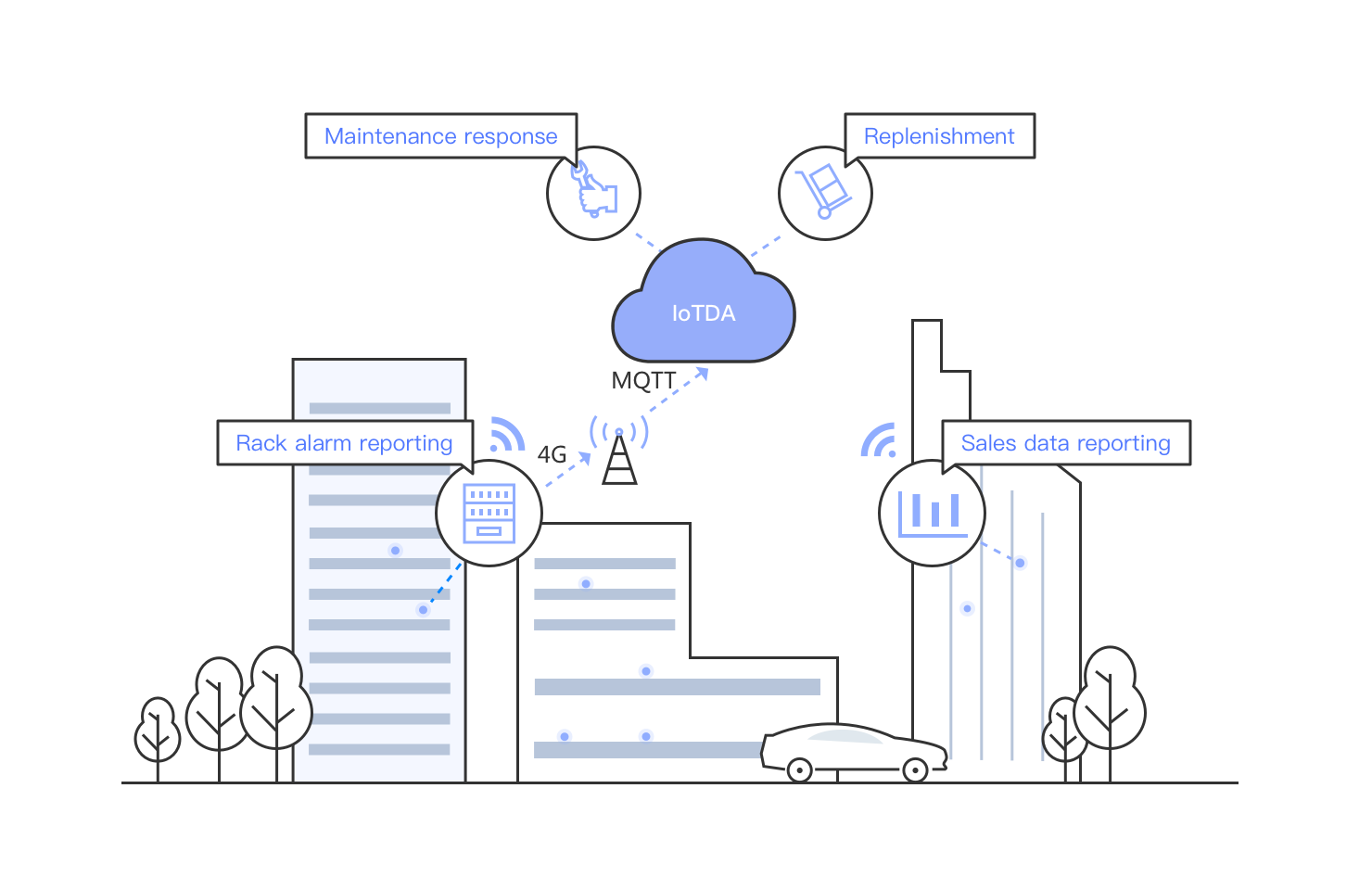Application Scenarios

Challenges
An elevator needs to be configured with three to five types of sensors. The development workload is significant.
As the number of connected devices increases, the platform must maintain high performance and scalability.
Benefits
Multiple sensors can be easily connected through an edge gateway that is pre-integrated with a device SDK.
The platform supports hundreds of millions of connections and millions of concurrent connections, ensuring access for countless devices and long-term device connectivity.
Elevator data can be queried easily and visually for timely O&M and unified supervision.
Elevator control apps and applets make touch-free rides possible, mitigating health risks in public spaces.

Challenges
Vending machines are widely distributed and inspection is labor-intensive. Product shortages and device faults can go unnoticed, making logistics inefficient and operations more expensive.
Benefits
Real-time reporting of shortages and other inventory details ensures best sellers are always in stock.
Real-time alarms for display racks mean problems get fixed fast.
Big data analytics for sales data provides insights to formulate better sales strategies.
Solution
Use general computing ECSs, which provide a balance of compute, memory, and network resources. This ECS type is appropriate for medium-load applications and meets the cloud service needs of both enterprises and individuals.

Challenges
Widely distributed water, electricity, and gas meters are connected to different networks in different ways, so network and protocol adaptation is complex, rollout slow, and costs high.
Benefits
Connecting devices from different manufacturers to a platform eliminates network and protocol differences and decouples applications from devices.
Remote metering and real-time monitoring eliminate time and labor costs associated with manual inspections.
Real-time alarm management, E2E fault demarcation, and remote upgrades are available for GUI-based O&M.
Why IoTDA?
Simplified Device Access in All Scenarios
- 10+ access modes are available, covering a diverse range of scenarios.
- Plug-in customization facilitates access using proprietary and industry protocols.
- Multi-language SDKs and a wide range of networks and protocols are supported for fast, convenient device access.

Stable Connections and High-concurrency Communications
Using IoTDA, you can:
- push data to your application servers in real time.
- forward data to more than 10 cloud services for different needs.
- customize data filtering rules to process reported data more efficiently.
The carrier-class microservice architecture supports hundreds of millions of connections and millions of concurrent connections. The service reliability reaches 99.95%.

Full-link Self-diagnosis, Efficient O&M
- Full-link log analysis and message tracing enable self-service O&M and fast issue fixing.
- You can create custom alarm thresholds based on specific service and scenario requirements, so you can detect service exceptions in a timely manner.

Building Cost-effective IoT Solutions
- IoTDA is more economical and worry-free than enterprise-managed platforms.
- GDPR-compliant security measures secure devices, information transmission, and data privacy.
- You can choose from pay-per-use billing mode as well as increase specifications of the Standard edition on demand.


